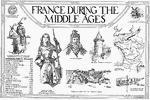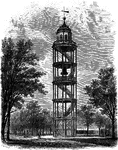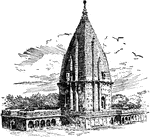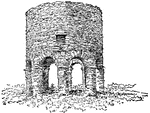
Projectile Motion of a Cannonball
"Suppose a cannon be loaded with a ball, and placed on top of a tower, at such a height from the ground,…

Leaning Tower
Illustration of a leaning tower with a perpendicular drawn from the top of the tower to the ground to…
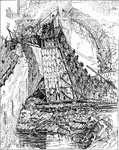
Movable Tower
A movable tower was used o attack a city in the medieval ages. It "was rolled up to the wall of the…

Lighthouse
"A tower or other elevated structure bearing a light at the top and erected at the entrance of a harbor…

Church Saxon Architecture
Tower of Sompting church, Essex. Saxon Architecture is the earliest stage of native English architecture,…
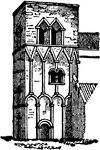
Barton-on-Humber Church
Tower of Barton-on-Humber church, Lincolnshire. Saxon Architecture is the earliest stage of native English…

Long and Short Saxon Architecture
Long and short work. Saxon Architecture is the earliest stage of native English architecture, its period…
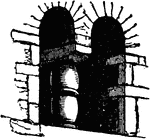
Saxon Architecture Window
Window with a baluster. Saxon Architecture is the earliest stage of native English architecture, its…

Devils Tower
From the southeast, a man views Devils Tower or Mato Teepee, a national monument in Wyoming.

Eiffel Tower
The Eiffel Tower, a global icon on the Champ de Mars in Paris, France stands 984 feet high.
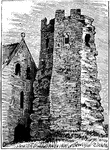
Roman Lighthouse, and Part of St. Mary's Church, Dover
The lighthouse on the Eastern Heights still stands in the grounds of Dover Castle to 80 foot (24 m)…
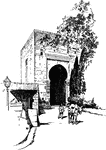
The Tower of Justice
This image depicts a man and a donkey walking under The Tower of Justice, the original entrance gate…

La Torre del Clavero
This image depicts the towers of a castle, La Torre del Clavero, in Salamaca, Spain.
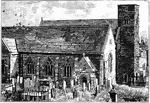
Monkwearmouth Church
The present parish church of St. Peter's at Wearmouth, on the north bank of the River Wear, occupies…

Jarrow Church Tower
The present parish church of St. Peter's at Wearmouth, on the north bank of the River Wear, occupies…

Cathedral at Pisa (exterior)
An illustration of the Cathedral at Pisa located in Pisa, Italy. In the distance on the right side the…
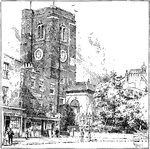
Old Church at Chelsea
Formerly it was the parish church of Chelsea when it was a village, before it was engulfed by London.…

Sompting Church Tower
The church was originally built by the Saxons around 960, then was adapted by the Normans when William…

Wells Cathedral, Somerset
Built between 1175 and 1490, Wells Cathedral has been described as "the most poetic of the English Cathedrals".…
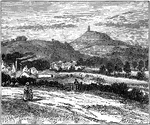
The Hills at Glastonbury
Glastonbury Tor is a hill at Glastonbury, Somerset, England, which features the roofless St. Michael's…

Earls-Barton Saxon Tower
The influence is very much Roman, and this can be seen by looking at the doors and windows of the tower.…

St. Aldhelm's Church, Bradford-on-Avon
Notable is the Saxon church (dedicated to St. Laurence), which may have been founded by St. Aldhelm…
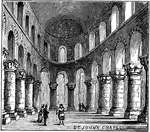
St. John's Chapel in the Tower
St. John's Chapel, or the Chapel of St. John the Evangelist, is located in the Tower of London. Dating…
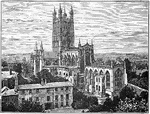
Gloucester Cathedral (Abbey) Church
The cathedral consists of a Norman nucleus (Walter de Lacy is buried there), with additions in every…
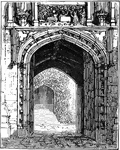
Gate of Merton College, Oxford
Merton College is one of the constituent colleges of the University of Oxford in England. Its foundation…

Lollard Prison, Lambeth Palace
Lambeth Palace is the official London residence of the Archbishop of Canterbury. It is located in Lambeth,…

Henry V of England
Henry V (16 September 1386 – 31 August 1422) was one of the most significant English warrior kings…
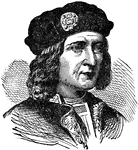
Richard III of England
Richard III (2 October 1452 - 22 August 1485) was King of England from 1483 until his death. He was…

Richard III of England
Richard III (2 October 1452 – 22 August 1485) was King of England from 1483 until his death. He…
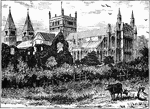
Southwell Minster
The earliest church on the site is believed to have been founded in 627 by Paulinus, the first Archbishop…
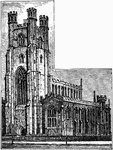
St. Mary's Church, Cambridge
In addition to being a parish church in the Diocese of Ely, it is the University Church for the University…

Robert Dudley, Earl of Leicester
Robert Dudley, 1st Earl of Leicester (24 June 1532~1533 – 4 September 1588) was the long standing…
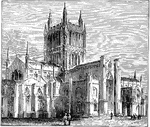
Hereford Cathedral
In the war between King and Parliament (the English Civil War) the city of Hereford fell into the hands…

Procession to the Tower of London
Her Majesty's Royal Palace and Fortress, more commonly known as the Tower of London (and historically…

Traitor's Gate, Tower of London
The name Traitors' Gate has been used since the early seventeenth century, prisoners were brought by…
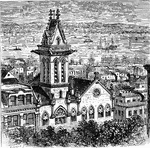
Trinity School
Trinity School is a private, preparatory, co-educational day school for grades K-12 located in New York…

Tower Brewery Cellars
A diagram of a tower brewery cellars. A brewery is a dedicated building for the making of beer, though…

Earls Barton Church
The tower is the only remaining piece of the Earls Barton Church in Northamptonshire, England. It is…

Tower of the Winds
The Tower of the Winds, also called horologion (timepiece), is an octagonal Pentelic marble clocktower…
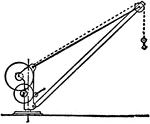
Fixed Hand Revolving Jib Crane
An illustration of a fixed hand revolving jib crane. A jib crane is a type of crane where a horizontal…
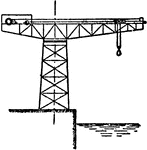
Hammerhead Crane
The "hammerhead", or giant cantilever, crane is a fixed-jib crane consisting of a steel-braced tower…

Porcelain Tower at Nankin
Indian art made its entrance into China with the worship of Buddha. But still diversities, corresponding…

Stone Parapet
The stone parapet is a German Renaissance design of scrolls found on the Dagobert tower, a castle in…










